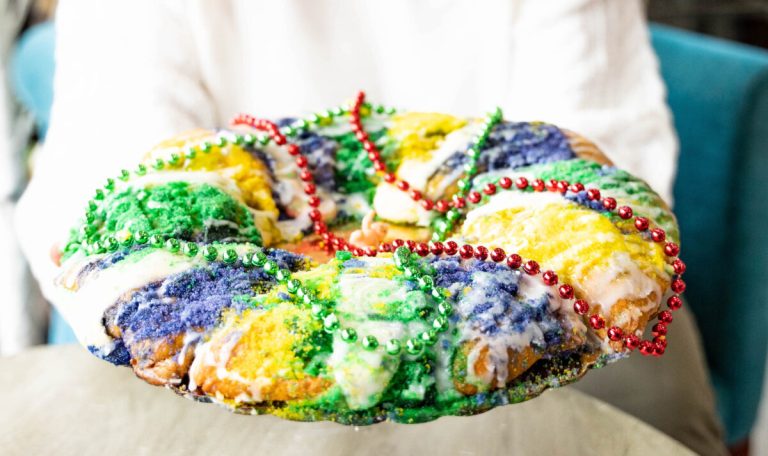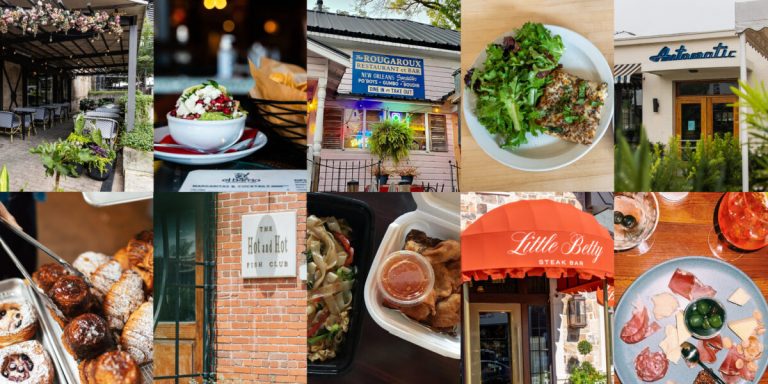Feed Hummingbirds for their Winter trip . . . and encourage them to come back next Spring
Reading time: 10 minutes

One morning in May, a ruby-throated hummingbird hovered on the outside of my breakfast room windows and peered in at me, as if to demand, “Hey, where’s my feeder?”
It was sitting on a shelf in our garage, cleaned, wrapped and stored away for fall – or so we thought. My husband, George, and I had helped hundreds of hummingbirds bulk up for their twice-a-year, 500-mile flight across the Gulf of Mexico from our farm in Mobile, and we simply weren’t expecting to host them throughout the breeding season in our new suburban home in the Birmingham area.
Callie the Ruby-throated Hummingbird

Callie, as I came to call her, quickly taught us different. Before we retrieved the feeder from the garage and prepared a batch of nectar to fill it, she was back – and she wasn’t alone. Within hours, we had half a dozen hummers fighting over the feeder. Callie tended to perch on the wire hanger, fending off the friends that she had led to our back garden, and it was clear that one feeder wouldn’t be enough.

Nor would two. By the middle of the summer, our back garden was a hummingbird hotspot with four feeders: one at the edge of the patio outside our breakfast room windows; a second at the edge of a garden filled with flowering shrubs outside my favorite reading nook; a third attached to one side of a six-foot privacy fence; and a fourth suspended from the top of a small greenhouse, empty for the summer.

The busiest is the one on the other side of the window from my reading nook. The first hummingbird appears at first light. At dusk, dozens of them are hovering around all the feeders, eager to fill up before dark when they settle in for the night among the band of trees behind our home. Then, their metabolism will slow to a torpor, compensating for the energy they have burned so abundantly during the day as their tiny wings beat from 70-80 times per second to 200 during their courtship flights.
Over the last few days, we have seen some of our summer visitors head out as they begin to make their way south to southern Mexico and Central America. We’ve also seen some new ones stop by, presumably starting their migration from further north. They’ll continue flying from and through the Birmingham area well into October, so, if you haven’t hung up a feeder, now is still a good time to do so.
Feeder Options
Of our four feeders, the favorite by far is a 20-oz. capacity, red glass model made by More Birds and sold at Walmart and www.walmart.com , as well as Amazon. It has six feeding ports, not five, and the perches at each port are just the right size for our ruby-throated hummers. Plus, it’s easy to clean. For us, it would be even better if it held 30 ounces of nectar, because two or three dozen hummingbirds feeding all day long will empty it in less than a day. It was so popular, we bought a second one.
Our two other feeders do hold 30 ounces, but one, manufactured by Perky-Pet, has the perches just a tad too far from the ports for smaller hummingbirds, like the ruby-throated variety. Still, we hung this one in the “prime” location and the hummers couldn’t be happier. Our oldest feeder has clear glass with a red base and yellow flowers, and it has satisfied hummingbirds for years. Smaller feeders are fine if you don’t have many birds.
For us, it would be even better if it held 30 ounces of nectar, because two or three dozen hummingbirds feeding all day long will empty it in less than a day. It was so popular, we bought a second one. Our two other feeders do hold 30 ounces, but one, manufactured by Perky-Pet, has the perches just a tad too far from the ports for smaller hummingbirds, like the ruby-throated variety. Still, we hung this one in the “prime” location and the hummers couldn’t be happier. Our oldest feeder has clear glass with a red base and yellow flowers, and it has satisfied hummingbirds for years. Smaller feeders are fine if you don’t have many birds.
It’s a myth that nectar needs to be red, or even that the feeders do. It’s not necessary, or even desirable, to add red food coloring to your nectar. Food coloring is not found in flowers, so, even if it isn’t harmful to hummers, it can’t be good for them. We happen to like the pop of color the red glass adds to our garden, but we experimented this summer with both colored and plain nectar in the clear-glass feeder. The hummingbirds didn’t seem to care, and if there’s a chance that the dye is harmful, why add it?

Feeder Placement
What does matter is where you place the feeder. Hummingbirds are quite territorial. It’s unusual for them to crowd around one feeder, as they do in our garden. Instead, one tends to claim a feeder and will then spend more time driving others away from it than sipping from it. If you hang more than one feeder, make sure they are spaced at least 15 and preferably 25 feet apart. If you have the space, consider placing the feeders where the birds at one cannot see the birds at another. And don’t place them too close to windows. Flying at 20-30 miles an hour, a hummingbird who slams into the glass may only knock itself out, but it is more likely to dash itself to death. We rescued one who recovered, but buried two who did not. See our earlier story about bird collisions.
Hummingbirds prefer shade, though all of our feeders get full sun for at least part of the day. The busiest feeder in our garden gets more shade for more of the day. This one, too, is surrounded by flowers as the hook holding it is planted between miniature gardenias and shrub roses, with abelias, daylilies and a “Little Gem” magnolia nearby. And, while none of those can be found on lists of plants that attract hummingbirds, well, the hummingbirds didn’t read the list. The ones who can’t get a spot at the feeder keep busy by dipping into the flowers below.

I wasn’t expecting to attract hummers when I designed this garden. Now, I’m adapting it to make it more attractive to hummingbirds next year, when they begin their northward migration and settle in for the breeding season. We planted a Coral Bells (heuchera) this summer. Other good choices for the Birmingham area are fuchsia, honeysuckle, penstemons, and salvias, as well as the old-fashioned yellow shrimp plant. Hummingbirds prefer tubular but unscented flowers, where they don’t have to keep a wary eye out for bees or wasps, so keep these in mind as consider what to add to your garden.
Hummingbird Food Recipe
Flower nectar is usually about 25 percent sucrose. We use the same proportion – one cup of granulated white sugar dissolved in three cups of water – in preparing nectar for our feeders, and I suggest using this ratio during the migration season. Hummingbirds will burn a lot of calories on that 18- to 22-hour flight across the Gulf! During the breeding season, you may want to use a 20 percent nectar solution – one cup granulated white sugar to four cups of water – if you have plenty of hummingbird-friendly flowers where they will mainly feed.

Do not ever use artificial sweeteners, honey, or any flavorings. And, unless you have a hummingbird hotspot and need to refill your feeder(s) daily, boil the dissolved syrup for two minutes, to prevent fermentation. If you like, you can make up extra nectar. Just refrigerate, or freeze, it until needed. We use carefully washed plastic juice bottles, but a clean glass or plastic pitcher works as well.
Fun facts
Hummingbirds are the only birds who fly backwards, straight up, or straight down. They can also fly side-to-side.
Hummingbirds don’t fly all the time. They feed heavily each evening, then rest in a state called torpor where their resting heart rate drops from about 500 beats per minute to about 50 and their core body temperature drops 10-20 degrees F. In this state, they cannot defend themselves.

Hummingbirds don’t just sip nectar. They need adequate protein, fats, vitamins, and minerals, as well as carbohydrates, to survive. Those needs are supplied by small insects and spiders.
Hummingbirds feed at flowers of all colors, even white, though red does attract them to a particular spot.
Hummingbirds have great memories. If you set out feeders now, they will likely return next spring, about mid-March in the Birmingham area. And they will expect to find the feeder hanging at the exact spot where it was when they left. If it is, you, too may host a hummingbird hotspot during the seven-month breeding season, until migration ends, from mid- to late-October for Birmingham.
Some authorities believe cooling temperatures prompt the southern migration. Others believe hummingbirds are prompted to head out by decreasing hours of sunlight. Your feeder won’t keep hummingbirds from migrating. It will help give them the best chance to make their long trip.
Common predators are bullfrogs, hawks, and praying mantises. One of the latter found one of our feeders a few weeks ago, and our hummers were extremely cautious until we removed the threat.

Hummingbirds quickly adapt to the presence of humans. The one I named Callie, a ruby-throated hummingbird whose markings are so similar to the smaller Calliope, even poses for photographs. As they grow accustomed to your presence, they will even alight on your hand to sip nectar from an improvised cup, like a bottle cap.

Ruby-throated hummingbirds weigh about as much as a penny. Most live about 4-6 years, though one was recorded as living 9 years. They range from Texas in the west to northern Florida in the east, and from the Gulf Coast states up into Labrador and southern Canada during the breeding season.
More resources
A Hummingbird in My House: the Story of Squeak by Arnette Heidcamp, Crown Publishers, 1990. A fascinating memoir of the winter a New York woman found a ruby-throated hummingbird lingering in her garden when an unseasonable cold snap struck and ruined his chance to migrate.
Amazing Hummingbirds by Stan Tekiela, Adventure Publications, 2010. A guide to all hummingbirds, lavishly illustrated by the author, a professional wildlife photographer and naturalist.
Field Guide to Hummingbirds of North America (Peterson Field Guide series)by Sheri L. Williamson, Houghton Mifflin.
Merlin, an app designed by the Cornell Lab of Ornithology, for beginning and intermediate bird watchers. It offers limited identification information on birds (including the ability to search by size and/or color of feathers), plus recordings of calls and a map of the species’ range.
For more local bird resources, see this story to learn more about how to take care of and watch our avian friends.

Photos by Carole Sawada for Bham Now 















